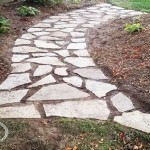Laying Pavers for a Patio: Essential Aspects to Consider
Transforming your outdoor space with a stylish and functional patio can be an exciting endeavor. However, laying pavers for a patio requires careful planning and meticulous execution to achieve a durable and aesthetically pleasing result. Here are some essential aspects to consider for a successful patio paver project:
1. Site Preparation and Layout
Proper site preparation is crucial for a stable and long-lasting patio. Clear the area of debris, remove any vegetation, and establish the desired grade of the patio. Establish the patio layout and determine the pattern and direction of the pavers. Mark the boundaries and create a precise layout to guide your installation.
2. Base Layer and Drainage
A sturdy base layer provides the foundation for your patio. Excavate the area to the desired depth, typically 6-8 inches. Compact the soil and install a base layer, which can be composed of crushed gravel, decomposed granite, or sand. Ensure proper drainage by sloping the base layer away from any structures to prevent water accumulation.
3. Paver Selection and Installation
Choose high-quality pavers that meet your aesthetic preferences and withstand outdoor conditions. Lay the pavers following the predetermined pattern and direction. Use a rubber mallet to gently tap each paver into place, ensuring a level and consistent surface. Maintain uniform spacing between the pavers using paver spacers.
4. Edging and Restraints
Edging and restraints prevent pavers from shifting or spreading over time. Install edging along the perimeter of the patio using materials such as concrete pavers, plastic edging, or metal restraints. These restraints define the shape of the patio and keep the pavers in place.
5. Compaction and Sealing
Once the pavers are laid, compact the surface using a plate compactor. This process ensures a firm and stable patio. Apply polymeric sand or a similar material to the joints between the pavers. This sand fills the gaps and creates a durable and weed-resistant surface. Finally, seal the patio to protect it from stains and weathering.
Additional Considerations:
- Consider the climate and choose pavers accordingly. Opt for frost-resistant pavers in colder climates.
- Plan for expansion and contraction due to temperature fluctuations. Leave slight gaps between pavers to accommodate movement.
- Use a level to ensure a flat and even patio surface.
- Clean and maintain the patio regularly to prevent stains and damage.

How To Prep Lay A Base For Pavers Western Interlock

Paver Installation Landscaping Network
.jpg?strip=all)
How To Install Patio Pavers Lv

Diy Booster Learn How To Lay Pavers Like A Pros

How To Install Pavers Installing A Patio Step By Guide

Urban Landworks Blog

How To Install Concrete Pavers Rcp Block Brick

Dry Laying Slabs On Gravel Or Sand Instruction Kronos Ceramiche Floor Coverings In Porcelain Stoneware
Dammann S Garden Company Diy Series How To Install Level Pavers And Patio Stones

Paver Installation Landscaping Network








